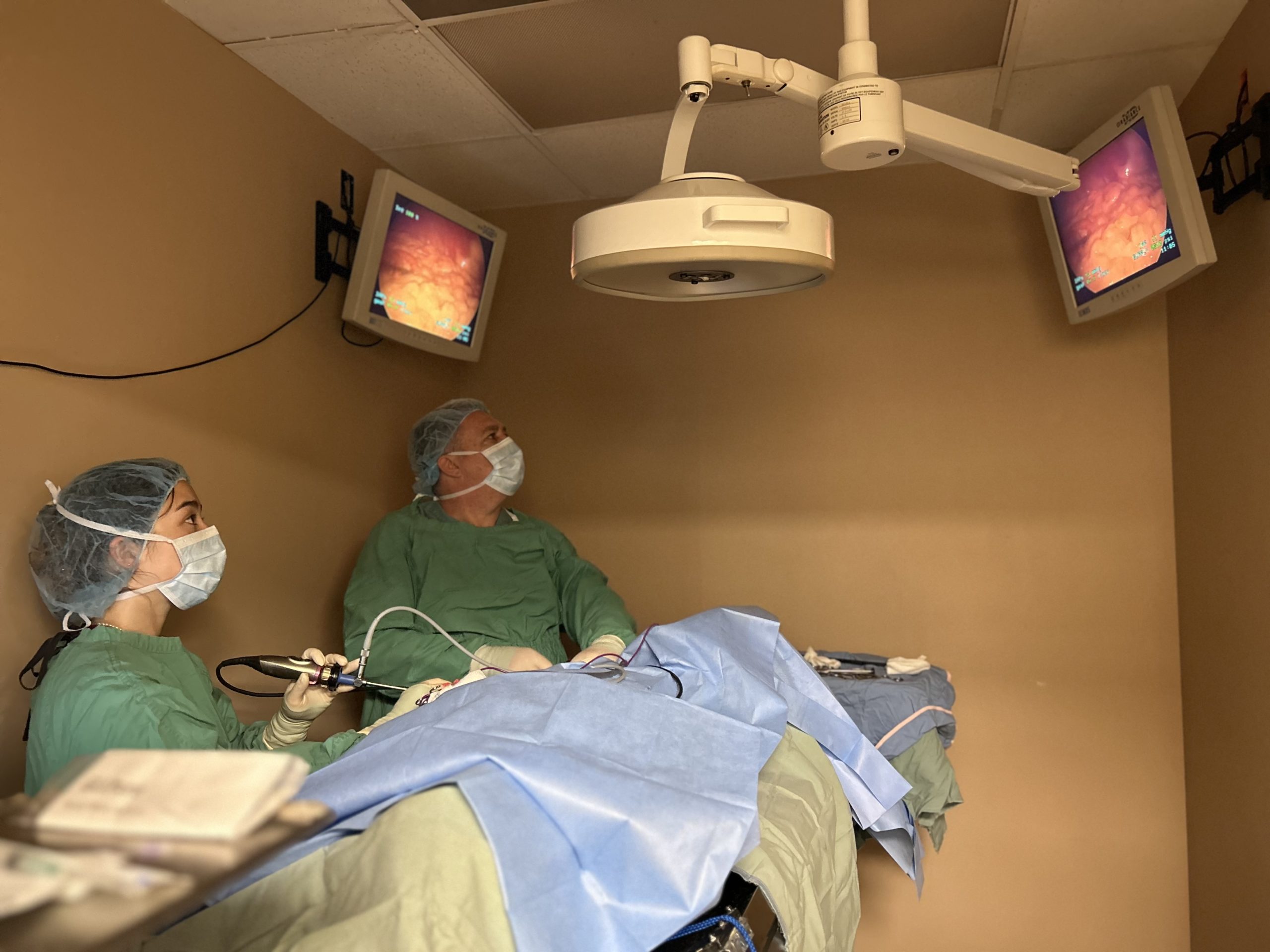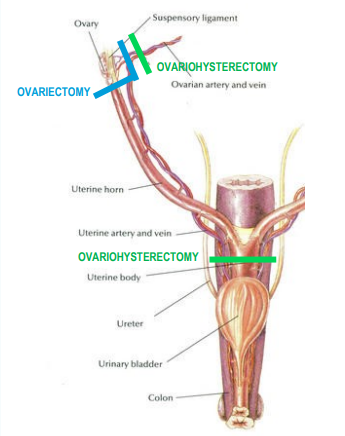Laparoscopy is a minimally invasive technique for viewing the internal structures of the abdomen. A laparoscope (camera) is inserted through a small incision in the abdomen magnifying internal structures of the abdomen to a monitor for a more detailed examination. Small incisions into the abdomen can be made to place surgical instruments in to the abdomen for procedures. The most common application of laparoscopy in veterinary medicine are spays (ovariectomy), biopsies, gastropexy (stomach tack), and cystotomy. It’s been used in humans for nearly two decades, but, in recent years, laparoscopy has been adopted as a less traumatic and less painful alternative to traditional surgeries in veterinary medicine.
Laparoscopic Spay
A laparocopic spay involves making 2 small incisions into the abdomen ranging in size from 0.3-1 cm in length. This is instead of a 5-10cm abdominal incision that is made for traditional spay surgeries. With laparoscopic spay it is an ovarioectomy that is performed that is the removal of both ovaries compared to traditionally ovariohystorectomy (spay) which is the removal of both ovaries and the uterus. By removing just the ovaries laparoscopically this prevents the placement of a 3rd laparoscope thus reducing surgical time and incisions for your pet. Leaving the uterus while removing the ovaries does not increase your pets risk of developing cancer of the uterus.
What are the benefits?
- Smaller incision size which minimizes tissue trauma
- Minimizes pain
- Minimizes complications due to a better visualization of the surgical procedure
- YOUR PETS RECOVERY TIME IS FASTER!

Pictured is Dr. Marco Mazzocco & assistant Kiara during laparoscopic spay

Ovariohysterectomy vs. Ovariectomy
The term OVARIOHYSTERECTOMY means to remove the ovaries and uterus. The image to the right shows the ovaries, uterus, and vessels that are removed when an ovariohysterectomy is performed. Traditionally this is done through a large, open incision in the mid-abdomen. The ovarian ligament is torn from its attachment on the abdominal wall. This tearing causes bruising to the abdominal wall and is a source of post operative pain.
The term OVARIECTOMY means to remove only the ovaries. By removing only the ovaries there is minimal disruption to the surrounding tissues and organs, thus maximizing patient comfort. The use of laparoscopy (fiber-optic camera) allows us to remove the reproductive organs with much less trauma, minimal pain and vastly improved visualization. We place two small holes though the abdomen 0.3-1cm in diameter. We make controlled cuts in the tissue rather than tearing the tissue, thus reducing the pain that occurs in the traditional procedure.
Prophylactic Gastropexy
Bloat-Gastric Dilatation and Volvulus (GDV) is a life threatening condition that requires emergency surgery. Large and giant breed dogs with deep chests are prone to GDV. Predisposed breeds are:
- Great Danes
- Saint Bernards
- Weimaraners
- Irish Setters
- Gordon Setters
- Standard Poodles
- Basset Hounds
- Doberman Pinschers
- Old English Sheepdogs
A gastropexy (stomach tack) can be performed prophylactically to prevent the rotation of the stomach to prevent a GDV from occurring by tacking the stomach to the body wall. Using minimally invasive surgery, a laparoscopic assisted gastropexy is accomplished with small incisions in the abdomen. This can be performed at the time of spay or neuter or anytime afterwards. We recommend this procedure for any large or giant breed dog that may be at risk.
